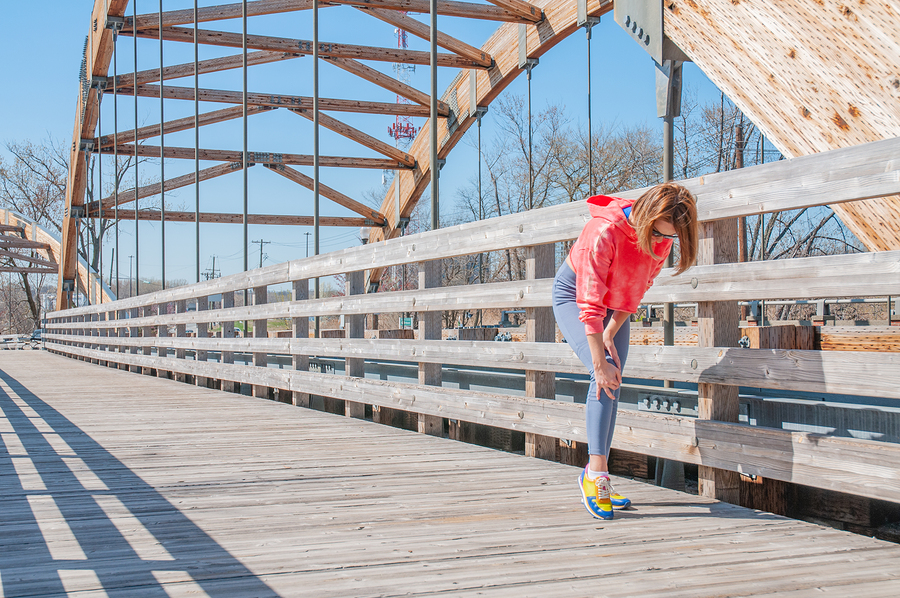We hear it all of the time. I didn’t know that PT is an excellent option for runner’s knee treatment in Visalia and Hanford. It’s true…yes, active individuals are at a higher risk for runner’s knee, but also true that physical therapy can address symptoms before they get worse.
If you run or participate in other sports that involve lots of running on a regular basis, you’re putting yourself in a good position health-wise to maintain adequate fitness. Unfortunately, you’re also placing yourself at an increased for a number of running-related injuries, and a condition called patellofemoral pain syndrome (PFPS) is high on that list. PFPS can truly dampen your ability to keep staying active, but help is on the way in the form of physical therapy.
The knee consists of two major joints: the tibiofemoral joint, which connects the shinbone (tibia) to the thighbone (femur), and the patellofemoral joint, which connects the kneecap (patella) to the femur. PFPS—also known as runner’s knee—is essentially an umbrella term used to describe any type of pain that arises from this patellofemoral joint or the area directly surrounding it. Another way of explaining it is pain at the front of the knee, in and around the patella.
Runner’s knee is regarded as an overuse injury, which means it usually develops due to excessive or repetitive movements that require the use of the knee. This is why the condition is most common in individuals who are physically active with running or other sports, especially when someone suddenly increases the amount or type of training in their routine. Other contributing factors include weakness, tightness or stiffness in the muscles around the knee, or an abnormality in the way the lower leg lines up with the hip, knee or foot.
Together, these conditions can interfere with the ability of the patella to glide smoothly on the femur during movement, and this increased friction is what is responsible for the pain and other symptoms associated with runner’s knee. Patients with runner’s knee typically report feeling pain in or around the patella when walking up or down stairs/hills, after long periods of activity or sitting, or when spending time on uneven surfaces.
These symptoms can certainly make it difficult to keep active or even get through the day without issue, and many patients with runner’s knee have to take time away from their routine as a result. But physical therapy can actually address these symptoms as soon as they begin and help patients recover before their condition gets any worse. A typical physical therapy program will include the following:
- Strengthening exercises
- Stretching exercises
- Sport-specific training
- Taping or bracing if necessary
- Cross-training guidance to avoid too much time in one sport
Results from a recent review of several studies illustrate just how effective a physical therapy program can be for patients with PFPS:
The studies indicated that manual therapy combined with physical therapy has some effect on reducing pain and improving function in PFPS, especially when applied on the full kinetic chain and when strengthening hip and knee muscles.
So if you’re an active individual and you’ve recently noticed some pain developing around your patella, it could be runner’s knee, and the best way to prevent it from getting any worse is to see a physical therapist right away.

